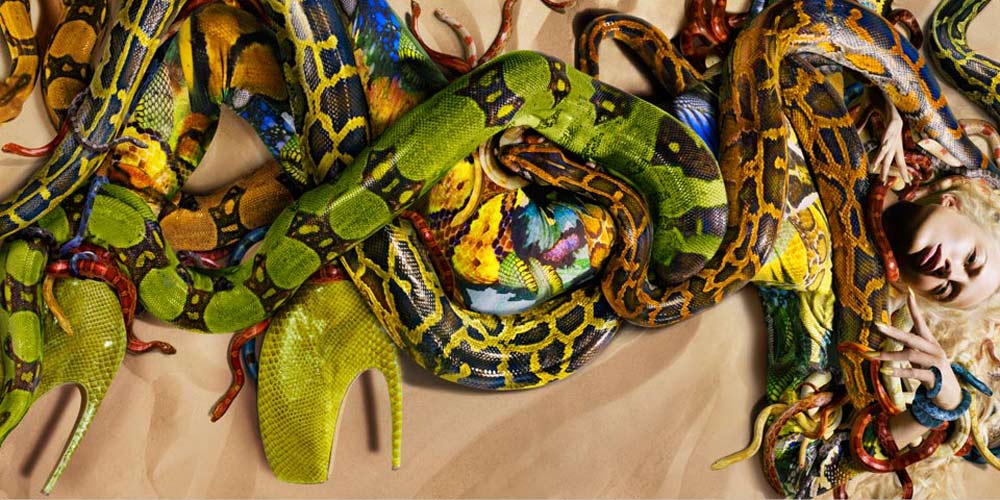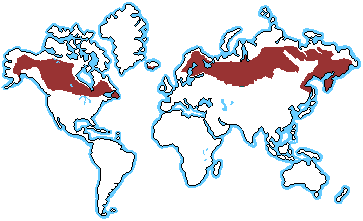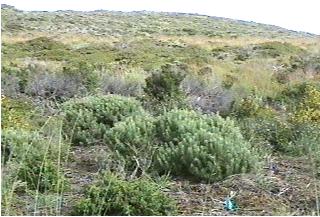Characteristics of the Major Biomes And How To Dress Accordingly
A guide by Cindy
For some reason, my science textbook (Modern Biology California by Holt, Rinehart and Winston), lists the eight main biomes in the following order: Tundra, Taiga, Temperate forest, Tropical forest, Temperate grassland, Savanna, Chaparral, and Desert; thus, I will present them like so. Please note that the apparel shown is merely for fun, and I do not really think one should dress like this is these conditions. They are merely inspired by the biomes. Let us begin.1. THE TUNDRA
- Location: World's northernmost biome, covering 1/5 of the world's land surface.
- Average yearly temperature range: -26°C to 12°C
- Average yearly precipitation: less than 25 cm (VERY LITTLE!)
- Vegetation: mosses, lichens, grasses, and dwarf woody plants
- Animals: caribou, musk oxen, snowy owls, arctic foxes, snowshoe hairs
- Distinct Characteristics: Contains permafrost, a permanently frozen (thus the name permafrost) layer of soil under the surface.
A look inspired by the tundra:
 |
| Greek Dress by Vivienne Westwood Anglomania. ~$685. |
- Location: South of tundra and north of the temperate regions. Stretches across large areas of northern Europe, Asia, and N. America between 50°N and 60°N.
- Average yearly temperature range: -10°C to 14°C
- Average yearly precipitation: 35-75 cm
- Vegetation: coniferous evergreen trees (as shown in the picture above). The shape of the needle is a leaf adaptation that reduces water loss.
- Animals: moose, bears, wolves, lynxes, hares. Many species hibernate 6-8 months of the year.
- Distinct Characteristics: During the long winter, snow covers and insulates the ground, protecting tree roots against freezing.
A look inspired by the taiga:
 |
| Yes, this was featured in a previous blog post, but this is what I immediately thought of upon learning the features of the taiga. Her paleness and bleached hair remind me of the frozen caps of the mountains, and the green dress represents the coniferous trees. |
- Location: eastern N. America, western and central Europe, N.E. Asia
- Average yearly temperature range: 6°C to 28°C
- Average yearly precipitation: 75-125 cm
- Vegetation: broad-leaved deciduous trees and shrubs or evergreen coniferous trees. (There is also a specific kind of temperate forest called deciduous forests, which contain trees that lose all of their leaves in the fall and regrow them each spring. Those forests contain trees such as birch, beech, maple, oak, hickory, sycamore, elm, ash, willow, and cottonwood)

- Animals: Bears, wolves, white-tailed deer, foxes, raccoons, and squirrels
Distinct Characteristics: distinct seasons and moderate climate. This is the place that you think of when someone says "the woods". Unless you also think of Snow White, like I do...
A look inspired by the temperate forest:
4. Tropical Forest
- Location: near equator, in the region known as tropics.
- Average yearly temperature range: 20°C to 34°C
- Average yearly precipitation: 200-400 cm
- Vegetation: broad-leaved evergreen trees and shrubs. Epiphytes (mosses, orchids, bromeliads0, small plants that live on the branches of tall trees, exist here because of intense competition for sunlight.
- Animals:monkeys, snakes, lizards, birds, insects. The rain forests contain about one-half of the world's species.
- Distinct Characteristics: only two seasons: one wet and one dry. Tropical RAIN forests contain long wet seasons and tall trees and plants that grow year-round. Tropical DRY forests have long dry seasons during which trees lose their leaves. Treetops form a continuous layer called the canopy, which shades the forest floor.
 | |
| (Try to distinguish between the person and the snakes!) |
5. Temperate grassland
- Location: interior of continents, at same latitude as temperate deciduous forests.
- Average yearly temperature range: 0°C to 25°C
- Average yearly precipitation: 25-75 cm (not enough to support trees)
- Vegetation: dense, tall grasses in moist areas; short grasses in drier areas. Grass here can survive repeated grazing and occasional fires because the actively growing part of the plant is at/below ground rather than at tip of stem.
- Animals: grazing animals such as bison.
- Distinct Characteristics: Because they have rich soil, much of world's temperate grassland has been transformed into farmland for growing wheat and corn.
 |
| I always love Taylor Swift's style. Reiss White Lace Dress ~$368. |
6. Savanna
- Location: Africa, S. America, Australia
- Average yearly temperature range: 16°C to 34°C
- Average yearly precipitation: 75-150 cm (more than deserts but less than forests)
- Vegetation: tall grasses and scattered deciduous trees and shrubs. Some trees shed leaves during dry season to conserve water. Above-ground parts of grasses often die during the dry season and regenerate after a period of rain.
- Animals: herbivores, such as zebras, giraffes, gazelles and carnivores, such as lions, leopards, cheetas
- Distinct Characteristics: Alternating wet and dry seasons
 |
| Or maybe something of this color, but more flowy. |
- Location: in coastal regions, around Mediterranean Sea and southern California (baby!)
- Average yearly temperature range: 10°C to 18°C
- Average yearly precipitation: less than 25 cm
- Vegetation: evergreen shrubs and small trees
- Animals: N/A (my book doesn't say....)
- Distinct Characteristics: mild, rainy winters, and hot, dry summers with periodic fires.
Chaparral-inspired look: (since this is basically, just So-Cal, it's just the usual summer-y dress, y'know?)
8. Desert
Location:N. Africa, central Australia, SW N. America, E. Asia
Average yearly temperature range: 7°C to 38°C
Average yearly precipitation: less than 25 cm
Vegetation: succulent plants and scattered grasses. Plants have to adapt to dry climate.
Animals: kit foxes, lizards, snakes
Desert- inspired look:











This is so cute, I may just do something of this sort on my blog. Of course, not without a) your permission and b)if I ever have time.
ReplyDelete